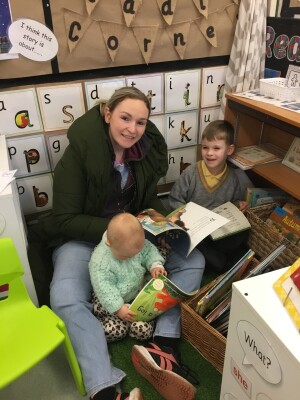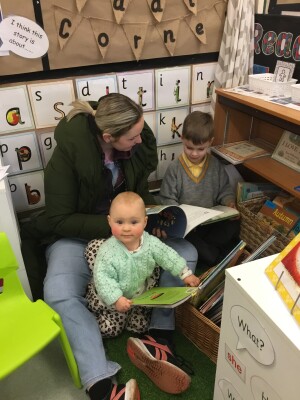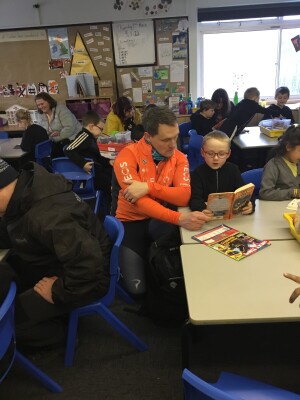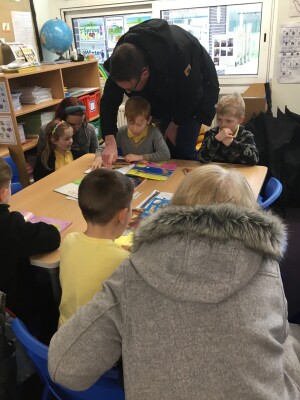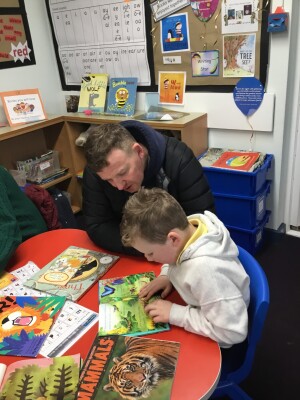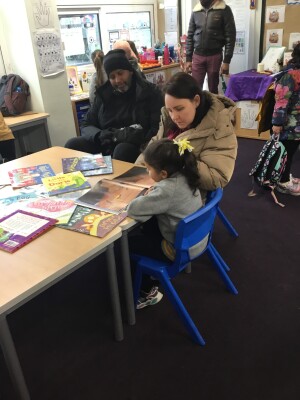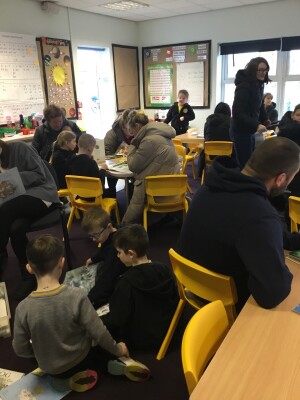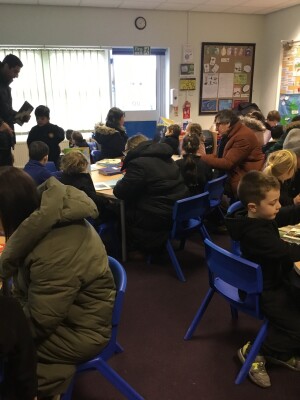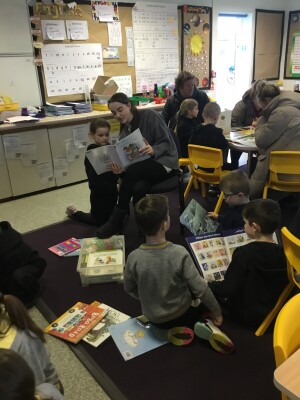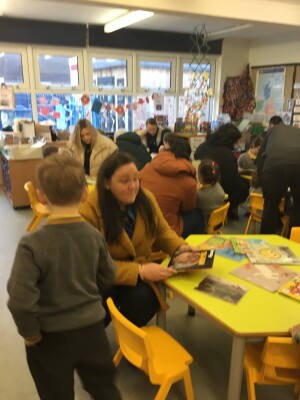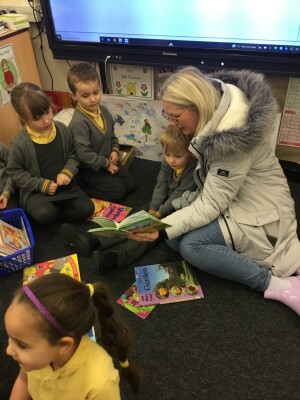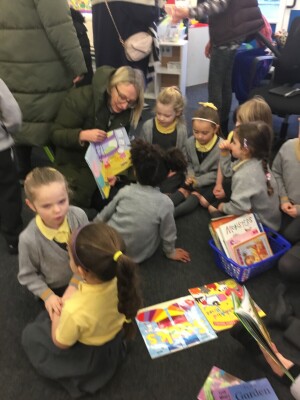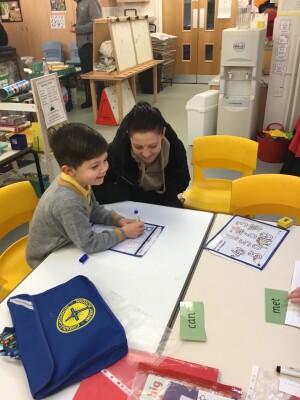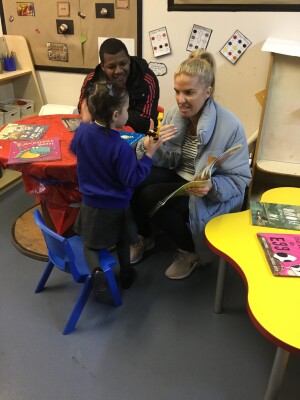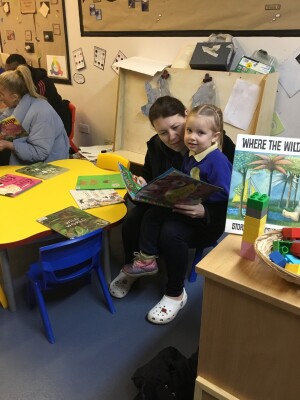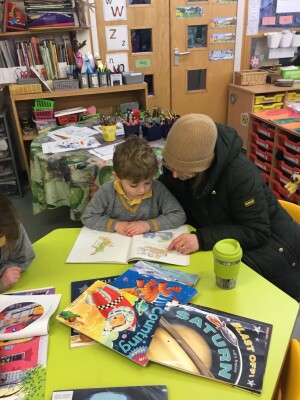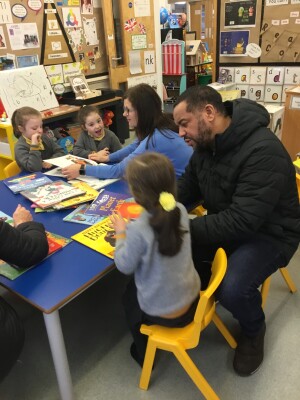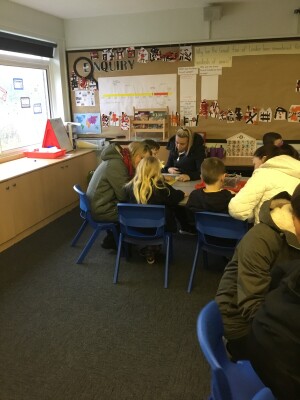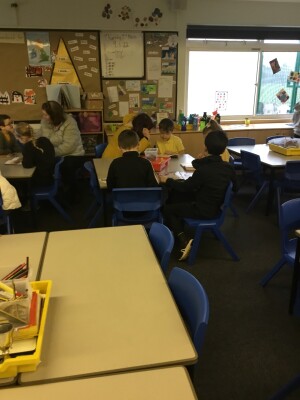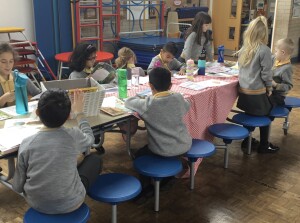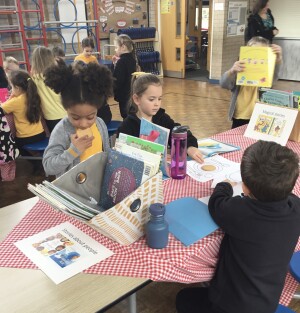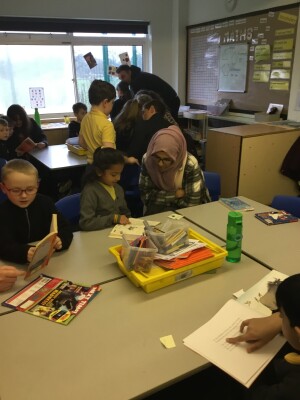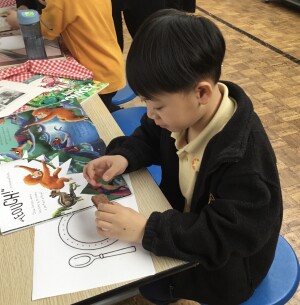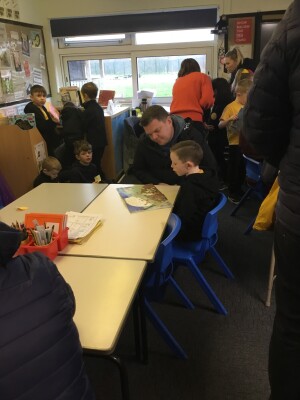Reading & Phonics
Reading at Cheadle Catholic Infant School:
The early reading experience alongside the effective teaching of phonics are the main elements in learning to read that are essential in supporting children in their journey to becoming competent readers. At Cheadle Catholic Infant School, we want all our children to read for pleasure and we place just as much emphasis on the joy of reading as the teaching of reading.
Phonics:
Our dynamic approach to teaching phonics begins in Nursery and progresses through Reception and into KS1. We ensure all teaching is consistent, well-paced and systematic so that all children are given every opportunity to become confident and enthusiastic readers.
At Cheadle Catholic Infant School, we use the ‘Read Write Inc’ phonics programme to ensure our teaching is robust and comprehensive.
Please click below to see our Reading Scheme of Work.
Reading-scheme-of-work-23-24.pdf
.
‘The more you read, the better you’re going to become as a storyteller.’ - Stan Lee, Marvel Comics
‘The more you read, the more you know. The more you learn, the more places you’ll go,’ - Dr Seuss
At Cheadle Catholic Infant School we encourage children to become resilient readers and confident communicators and reading is prioritised to enable all children to access the curriculum.
Learning to read is the most important thing your child will learn at our school. Everything else depends on it, so we put as much energy as we possibly can into making sure that every single child learns to read as quickly as possible. We want all children to love reading and to want to read.
Reading For Pleasure:
At Cheadle Catholic Infant School we acknowledge that one of the most crucial ways of getting children to engage in reading and adopt it as a life long habit is for children to know that it is fun. Therefore, we have chosen to promote ‘reading for pleasure’ at every given opportunity. Throughout the year, children will be given regular opportunities to develop a love of reading such as; listen to books all the way through without interruption, discover new authors and illustrators, share their own favourite books, share books with their parents, see adults enjoying reading as a pleasurable experience, visit the school library, develop their own sense of what they enjoy in a book, dress up, ‘Drop Everything And Read’ and make positive associations between reading books and enjoying themselves. In doing so, we are giving the children the clear message that reading is fun, it is for everyone and it is something that they want to do.
As Mem Fox famously said “When I say to parents ‘Read to a child’, I don’t want it to sound like medicine, I want it to sound like chocolate”
In the same way, we want reading to sound like chocolate, not medicine, to all the children in our school.
Mrs Nelson is our School Librarian. She plans regular and exciting reading challenges, promotes new authors and supports teachers in the teaching of reading in our school. She also organises our school library. We subscribe to the Cheshire Library Service which allows us to borrow new, exciting books to keep the books in our classroom fresh and make sure that we can cater to all tastes- fiction, picture books, chapter books, non-fiction, poetry- and engage all children.
We are the Farshore Reading For Pleasure Joint Whole School Award winners for 2022
Reading & Phonics:
Our consistent and rigorous approach to teaching early reading enables children to master the key skills that research suggests is important early on.
To do this, we follow the Read Write Inc. programme; this sets out a sequence of lessons that teach children to read accurately and fluently with good comprehension. They also learn to form each letter, spell correctly and compose their ideas step-by-step.
Useful Links
Read, Write, Inc Guidance for Parents
Parent Workshop - Introduction to RWI
Parent Workshop - Sound Pronunciation Guide
Online resources available for Read, Write Inc links:
Ruth Miskin Parents films on YouTube: https://www.youtube.com/playlist?list=PLDe74j1F52zSCiOMSn3zQDSzgu9TrbQ1c
Free e-books for home reading: http://www.oxfordowl.co.uk/Reading/
There are a number of resources available through the BBC website: http://www.bbc.co.uk/bitesize/ks1/literacy/phonics/play
Family Learning: www.familylearning.org.uk/phonics_games.html
Oxford Owl - http://www.oxfordowl.co.uk/ - is a free website built to support you with your child’s learning. You’ll find age-specific reading and maths tips and activities, eBooks, and lots of fun ideas to really bring your child’s learning to life. You will also find support and advice on a range of questions you may have - including helping your child with their phonics, motivating boys to read and ensuring your child is doing their best in maths.
Bookstart - http://www.bookstart.co.uk/ - This website provides information about the national Bookstart scheme and the Bookstart packs that your child will receive as a baby, a toddler and at age three to four. It also gives information about sharing books with your child. You can find out about Bookstart events in your area, which you can attend with your child.

